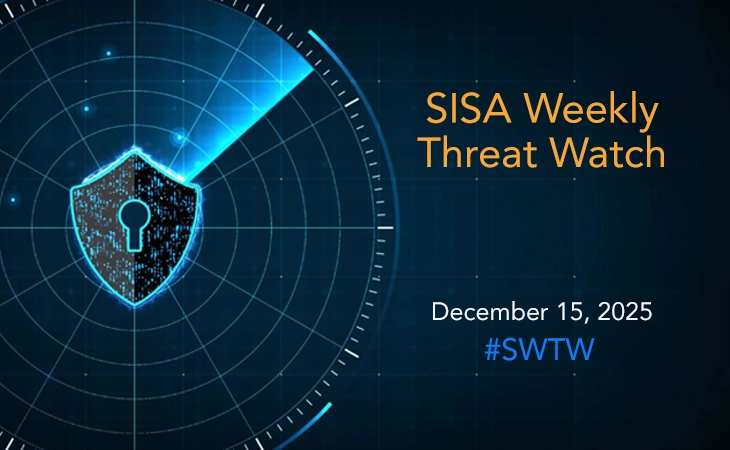
Enter the Matrix: Staying Secure with Full-Scale Cyberattack Simulations
Cybersecurity can sometimes feel like bracing for a storm without truly knowing if your shelter will hold up. You tick off your compliance boxes, run quick pen tests, and everything looks fine… until a crafty attacker or an unsuspecting insider finds that overlooked gap. In reality, the only sure way to understand how secure you are is to test every angle a malicious actor might explore. That’s where full-scale, real-world attack simulations—commonly called Red Team engagements—come into play. Think of your defenses as a grand fortress. If you really want to test that fortress, you don’t just wiggle the front gate. You scout for hidden tunnels, check for open windows, and maybe even disguise yourself as a friendly courier. That’s the essence of Red Teaming.
Here, we’ll discuss why a “Matrix” mindset matters, how Red Teaming differs from standard penetration testing, and the types of scenarios you might confront—especially when cloud environments and vendor relationships come into play. We’ll also offer glimpses of actual stories from organizations that put their defenses under the spotlight. So settle in, because we’re about to explore the concealed weak points lurking in even the best-laid security plans.
Why a “Matrix” Approach?
In the sci-fi movie The Matrix, everyday life is an elaborate illusion, and the real threats lurk beneath the surface. Cybersecurity can be much the same. Maybe you’ve got your firewall, your endpoint protection, and your redundancies set up. Yet genuine attacks often involve complex maneuvers: some combination of social engineering, cloud misconfigurations, and stolen credentials that automated scans might never detect. If you stay on the surface, you could miss the deeper vulnerabilities that leave you open to breaches.
Rising Complexity in the Attack Surface
The modern IT landscape doesn’t have a well-defined perimeter anymore. Between hybrid offices, continuous cloud adoption, and routine connections with third-party vendors, the older notion of a “closed network” is fading fast. You can lock down your own servers. But what if a contractor’s test environment sits wide open? Or a single admin in a different region misconfigured a cloud resource? When an attacker finds these gaps first, illusions of safety disappear. That’s where a Matrix-like mindset comes in: to look deeper than appearances and find weaknesses hiding under the digital noise.
Understanding Red Teaming
Red Teaming is a high-level, all-out challenge to your security posture. Imagine advanced ethical hackers (the Red Team) trying to breach your defenses while your defenders (the Blue Team) respond in real time, often without prior knowledge that a test is happening. The Red Team pulls from the same playbook as sophisticated cybercriminals: reconnaissance, infiltration, pivoting, and persistence. Unlike a standard penetration test that stops after uncovering a big flaw, a Red Team keeps going to see how far that flaw can be stretched.
Going Deeper Than Penetration Testing
Standard penetration tests and vulnerability scans still matter. They highlight known software bugs, obvious misconfigurations, and common security oversights. But once a pen test finds that first critical vulnerability, it often concludes. Red Team engagements, however, are designed to see how many doors one vulnerability might open. Could it compromise the entire domain? Could it bridge from on-prem servers to your cloud environment and dump sensitive data? Red Teaming aims to model a determined attacker’s behavior, testing your capacity to detect, contain, and respond along the way.
The Evolving Threat: Cloud & Beyond
There was a time when Red Teams mainly targeted on-premises networks, hoping to exploit unpatched operating systems, leftover domain trusts, or naive employees. That remains a staple. But the ever-expanding move to cloud environments has broadened the battlefield considerably.
Cloud Misconfigurations
In a cloud setting, a single wrong permission can be the difference between security and an open door. Attackers have adapted to find misconfigured cloud storage, unprotected API keys, and poor identity and access management (IAM) rules. Once they sneak into your cloud, they can spin up rogue virtual machines, siphon data from storage, or even install cryptominers—often in a lesser-monitored region that goes unnoticed until the bills pile up.
Take, for instance, a simple JSON Web Token (JWT) that’s posted publicly by mistake in a GitHub repository. If that token grants enough privileges, your entire cloud infrastructure might be at risk faster than you can say “patch update.”
Third-Party & Vendor Risks
Modern organizations frequently exchange data and resources with partners, vendors, and contractors. If one of those partners is compromised, attackers may pivot directly into your systems. Red Team exercises consider these external relationships, testing whether a lightly secured dev environment or a third-party tool can become the perfect side door into your primary network.
Red Teaming in Action: Real-World Scenarios
Theory is one thing, but actual stories reveal how organizations respond under the pressure of a real (yet simulated) breach. Let’s examine a few scenarios illustrating how Red Teams exploit both on-prem and cloud vulnerabilities. Sometimes it starts with an accidental leak. Sometimes it’s a sneaky physical breach. In each case, the main takeaway is how the lessons learned inspire a stronger defense.
Scenario 1: The Leaked Key Domino Effect
Initial Entry via Recon
SISA conducted an exercise for one of the fastest-growing digital technology service providers, an organization with many Fortune 1000 companies as clients. During the reconnaissance phase, the Red Team scoured code repositories, social media updates, and other public sources. They spotted a seemingly innocuous file containing a base64-encoded string that turned out to be an AWS IAM key.
Pivot to the Cloud & Data Exfiltration
That single key granted partial AWS Command Line Interface (CLI) access. No multi-factor authentication (MFA) had been enforced, so the Red Team enumerated resources in lesser-used regions to avoid detection. They discovered multiple S3 buckets, exfiltrated confidential files, and unearthed more secrets that granted access to Amazon DynamoDB, Redshift, and Lambda functions. To stay under the radar, they created new instances in an unmonitored region, sidestepping alerts because the organization’s monitoring tools focused on default regions only.
Key Lesson
One leaked credential can unleash a chain reaction. If you’re not actively hunting for rogue resource creation or scanning for unauthorized credentials, someone could set up an entire parallel infrastructure without ringing alarms. Logging isn’t enough if no one checks the logs in remote corners of your cloud environment.
Scenario 2: On-Prem, Meet the Cloud
Phishing & Lateral Movement
In another phase of testing for the same organization, the Red Team launched a targeted phishing campaign. All they needed was a single unsuspecting user, and voilà—an on-prem foothold. From there, the Red Team mapped the internal network, gathering DevOps scripts and container orchestration files that contained Azure keys. That was their bridge to the cloud.
Escalation & Exfiltration
With legitimate keys in hand, the attackers escalated privileges within Azure. They stood up new cloud resources, harvested financial records, and extracted personally identifiable data from containerized applications. Traditional perimeter defenses might block direct inbound intrusions, but once an attacker is inside, the path to cloud resources is often wide open, especially when credentials are scattered in plain text or stored in scripts.
Key Lesson
Companies frequently treat on-prem and cloud as separate silos, assuming that what happens in one doesn’t affect the other. Attackers see it differently. Once they breach one environment, they’ll probe for any credentials or configurations connecting to the next environment. If there’s no robust oversight, they can slip in and out before anyone realizes what’s happened.
Scenario 3: A Major Online Bank Faces Physical & Human Vulnerabilities
Passive & Physical Attacks
SISA also performed an advanced Red Team engagement for a leading financial institution known for its robust digital operations. This time, the focus included the physical and human elements. Tailgating turned out to be alarmingly easy. An attacker simply followed an employee into a restricted area. Once inside, the Red Team found that Wi-Fi networks were protected with minimal encryption or used weak passphrases. They staged reverse-proxy phishing attacks on Microsoft 365, capturing user credentials and hijacking session tokens, which rendered MFA ineffective.
Key Lesson
It’s not just about digital firewalls and zero-trust frameworks. If your on-prem badge system, visitor policies, or physical access controls are weak, an intruder can blend in, plug into your internal network, and go undetected. Combine that with stolen session tokens, and you might be looking at a full-scale compromise long before anyone on the security team even notices an extra face roaming the halls.
Methodology: What a Red Team Engagement Involves
Curious how these clandestine operations unfold? A typical Red Team exercise follows several phases:
- Threat Intelligence & Reconnaissance
The Red Team collects open-source intelligence (OSINT). This could be leaked credentials on the dark web, domain misconfigurations, or employee social media posts that reveal too much. Even a neglected subdomain can be a gold mine. - Planning & Scenario Building
After gathering intel, they craft realistic scenarios. Perhaps your workforce is scattered across the globe, making phishing more potent, or maybe you run heavy workloads in AWS. Everything from initial access attempts to final goals (like acquiring domain admin privileges) is mapped out. - Stealth Execution
The Red Team blends in with legitimate traffic, employing various tactics to gain access. If they fail to breach a web app, they might pivot to phone-based social engineering. Because the Blue Team isn’t informed, this tests your actual monitoring and threat-hunting capabilities. - Pivot & Persistence
Once inside, the Red Team moves laterally, hunting for administrator accounts and valuable data. They may embed backdoors or create new cloud credentials for ongoing access, mirroring the way actual cybercriminals maintain footholds. - Reporting & Debrief
After concluding the engagement, you receive a blow-by-blow account of every step taken. From phishing emails to misconfigured S3 buckets, nothing is left out. Actionable fixes often include revising IAM rules, strengthening employee security training, or improving how you collect and review logs.
The Business Case for Going Full-Scale
Red Teaming takes more time, planning, and resources than a conventional penetration test. Some fear it might disrupt daily operations. Still, the insights gleaned are priceless:
- Realistic Risk Assessment
Instead of guessing which vulnerabilities matter most, you see how attackers chain them together in real life. Are your employees too trusting? Is your incident response team overwhelmed by alerts? - Incident Response Maturity
The Red Team’s stealth approach forces your security team to spot unusual behavior in the moment. Do they catch unauthorized logins? Sudden spikes in network traffic? The faster they detect and react, the better off you’ll be. - Strategic Roadmap
You walk away with a clear plan for fortifying high-risk areas, whether that’s your use of shared credentials, your approach to multi-factor authentication, or your staff’s readiness to spot phishing. - Long-Term Resilience
Red Team exercises aren’t a one-and-done tactic. They’re a chance to fine-tune your detection and response strategies, so when a genuine attack lands, you can rally quickly and minimize harm.
Red Teaming with SISA: What Would That Look Like?
We’ll test your security posture where it truly matters—any hidden subdomain, overlooked cloud region, or unguarded office door. We start by immersing ourselves in your business context, understanding your workflows, and then crafting realistic scenarios tailored to your industry-specific threats.
- Comprehensive Coverage
We might sift through GitHub for accidental code leaks, scrutinize your AWS or Azure setup for cracks, or explore your offices to see if our team can simply walk in. On top of that, we’ll test your personnel’s resistance to phishing, tailgating, and impersonation. - Transparent Reporting
After we wrap up the engagement, you’ll see every move we made, from the first email or phone call to the final data extraction. Each step gets paired with recommendations on how to block or detect such moves in the future. - Continual Improvement
Cyber threats keep changing. We believe Red Teaming is a cyclical process. Fix the vulnerabilities we uncover, upskill your Blue Team, and stay prepared for the next wave of potential threats.
Embracing the Matrix Mentality
Threats morph constantly, especially in cloud-centric setups. So ask yourself: Are you ready to see beyond the everyday illusions? A Red Team exercise, like the awakening in The Matrix, tears down that safe facade. It reveals how quickly an adversary might tunnel into your systems, pivot across environments, and even tiptoe around your logs.
No system is ever perfectly secure, but the real goal is to detect and respond before an intruder can set up shop. The beauty of Red Teaming is that it conditions your organization to be quicker, sharper, and more resilient under genuine pressure. Instead of waiting for an actual adversary, you choose to learn from a controlled simulation—and you gain the insights you need to strengthen your fortress from every angle.
Think it’s time to find out how tough your defenses really are? Come talk to us. Maybe it’s a thorough reconnaissance check, a social engineering test, or a simulated cloud breach. Whatever shape it takes, focus on going beyond standard audits and seeing your company as a potential attacker would.
 USA
USA India
India APAC
APAC Middle East
Middle East Global
Global




 Facebook
Facebook Linkedin
Linkedin  X
X Youtube
Youtube








